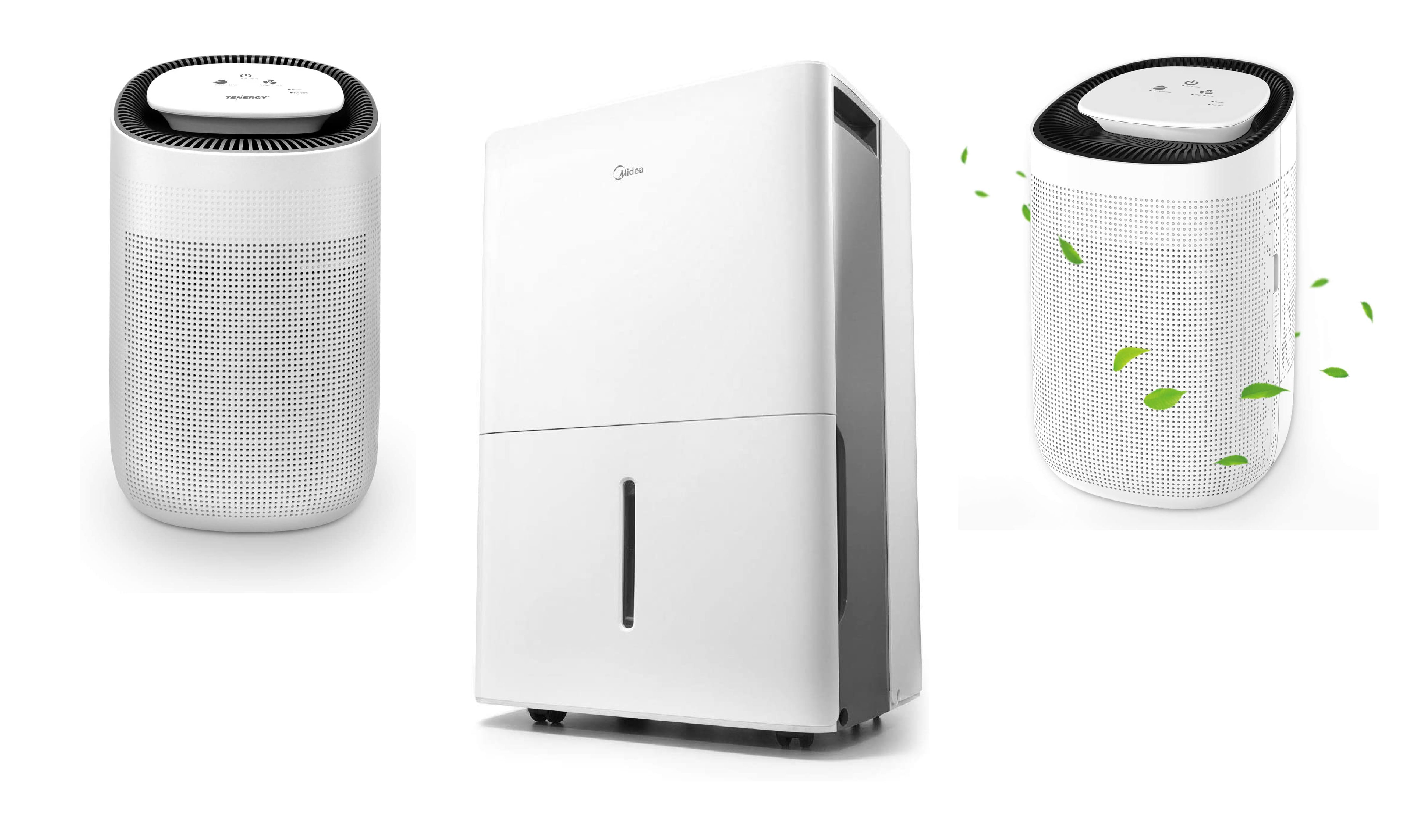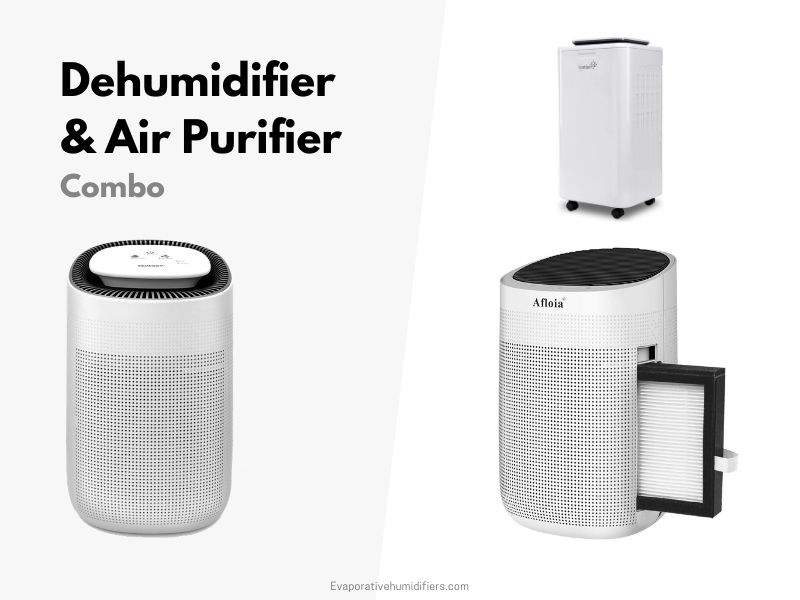Best Dehumidifier And Air Purifier Combo

The quest for optimal indoor air quality and energy efficiency has led many homeowners and businesses to explore combination appliances. Among the most popular are dehumidifier and air purifier combos. These devices promise to tackle two crucial aspects of indoor comfort: humidity control and air pollutant removal. But are they the right solution for your needs, and what are the key factors to consider before investing? This article delves into the world of dehumidifier-air purifier combos, exploring their benefits, drawbacks, energy efficiency, and smart integration possibilities to help you make an informed decision.
Understanding the Need: Humidity & Air Quality
High humidity levels create a breeding ground for mold, mildew, and dust mites, exacerbating allergies and respiratory issues. Conversely, excessively dry air can lead to dry skin, irritated sinuses, and increased susceptibility to infections. Air pollutants, ranging from pollen and pet dander to volatile organic compounds (VOCs) emitted from furniture and cleaning products, further compromise indoor air quality.
The Environmental Protection Agency (EPA) recommends maintaining indoor humidity levels between 30% and 50%. Air purifiers, equipped with filters like HEPA (High-Efficiency Particulate Air) filters, can remove airborne particles, while activated carbon filters can absorb gases and odors. Addressing both humidity and air pollution simultaneously is crucial for creating a healthy and comfortable indoor environment, particularly for individuals with allergies, asthma, or other respiratory sensitivities.
Dehumidifier-Air Purifier Combos: A Two-in-One Solution?
A dehumidifier-air purifier combo integrates the functions of both appliances into a single unit. This can offer several advantages:
- Space Savings: Consolidating two devices into one frees up valuable floor space.
- Cost Efficiency: A combo unit may be more affordable than purchasing separate dehumidifiers and air purifiers, although this isn’t always the case.
- Convenience: Simplified operation and maintenance, with fewer devices to manage.
However, combo units also have potential drawbacks:
- Compromised Performance: The combined functionality might lead to compromises in the performance of either the dehumidifier or the air purifier. A dedicated dehumidifier or air purifier may offer superior performance.
- Single Point of Failure: If the combo unit malfunctions, both dehumidifying and air purifying functions are lost.
- Filter Compatibility: Finding replacement filters that meet both dehumidifying and air purifying requirements can be challenging.
Key Features to Consider
When evaluating dehumidifier-air purifier combos, consider the following features:
Dehumidifying Capacity
Dehumidifiers are rated by their pint capacity, which indicates the amount of moisture they can remove from the air in a 24-hour period. Choose a unit with a capacity appropriate for the size and humidity level of your space. A small, damp room might only need a 30-pint unit, while a larger, more humid basement could require a 70-pint or even a commercial-grade dehumidifier.
Air Purification Technology
Look for units with multiple filtration stages, including:
- Pre-filter: To capture large particles like dust and pet hair, extending the life of other filters.
- HEPA Filter: To remove at least 99.97% of airborne particles 0.3 microns or larger, including pollen, dust mites, and mold spores.
- Activated Carbon Filter: To absorb odors, gases, and VOCs.
- UV-C Light (Optional): Some units incorporate UV-C light to kill bacteria and viruses, although the effectiveness of this feature is debated.
Energy Efficiency and Cost Savings
Energy Star certified dehumidifiers are significantly more efficient than non-certified models, saving you money on your electricity bill. Look for a low energy factor (liters of water removed per kilowatt-hour) – a higher energy factor means greater efficiency. Check for potential rebates from your utility company for purchasing Energy Star certified appliances. Consider the unit's power consumption when running both the dehumidifying and air purification functions.
ROI can be significant in preventing mold growth and reducing respiratory problems, thereby lessening medical expenses. According to the EPA, addressing indoor air quality issues can lead to improved employee productivity in office settings, boosting overall business revenue.
Smart Features and Integration
Many modern dehumidifier-air purifier combos offer smart features, such as:
- Wi-Fi Connectivity: Allowing you to control the unit remotely via a smartphone app.
- Smart Thermostat Integration: Integrating with smart thermostats to automatically adjust humidity levels based on temperature and occupancy.
- Air Quality Sensors: Monitoring indoor air quality in real-time and adjusting the unit's settings accordingly.
- Voice Control: Compatibility with voice assistants like Amazon Alexa or Google Assistant.
Smart features enhance convenience and allow for more precise control, optimizing both air quality and energy efficiency. Consider models that integrate with existing smart home ecosystems for seamless operation.
Maintenance and Filter Replacement
Regular maintenance is essential for optimal performance. Clean the water tank frequently to prevent mold growth. Replace filters according to the manufacturer's recommendations. HEPA filters typically need to be replaced every 6-12 months, while activated carbon filters may require more frequent replacement. Factor in the cost of replacement filters when evaluating the overall cost of ownership.
Noise Level
Consider the noise level of the unit, especially if you plan to use it in a bedroom or living area. Look for models with a low decibel (dB) rating. Many dehumidifiers have different fan speed settings, which can affect the noise level.
Alternative Solutions: Separate Dehumidifiers and Air Purifiers
While dehumidifier-air purifier combos offer convenience, separate units may be a better choice in certain situations. If you have specific needs for either dehumidification or air purification, dedicated devices can provide superior performance.
For example, if you have a very damp basement, a heavy-duty dehumidifier may be necessary. Similarly, if you have severe allergies or asthma, a high-performance air purifier with a medical-grade HEPA filter might be the best option. Investing in two separate devices allows you to tailor your air quality strategy to your specific needs.
Cost Analysis: Combo vs. Separate Units
The cost of a dehumidifier-air purifier combo can vary widely depending on the features, capacity, and brand. Entry-level models may cost around $200-$300, while high-end units with smart features can exceed $500. Separate dehumidifiers and air purifiers can be purchased for similar prices, but it's important to compare the total cost of ownership, including energy consumption and filter replacement costs.
Here's a sample cost comparison:
Combo Unit:
- Initial Cost: $400
- Annual Filter Replacement: $50
- Annual Energy Cost: $100 (estimated)
- Total Cost (3 years): $850
Separate Units:
- Dehumidifier: $250
- Air Purifier: $200
- Total Initial Cost: $450
- Annual Filter Replacement (Dehumidifier): $30
- Annual Filter Replacement (Air Purifier): $40
- Total Annual Filter Replacement: $70
- Annual Energy Cost: $120 (estimated)
- Total Cost (3 years): $1020
This is a simplified example, and actual costs may vary depending on the specific models and usage patterns. However, it illustrates the importance of considering all costs, including energy consumption and maintenance, when making your decision. In this scenario, the combo unit appears more economical over a three-year period. Always factor in potential utility rebates for Energy Star certified models.
Government Guidelines and Energy Star Certification
The Energy Star program provides guidelines for energy-efficient appliances, including dehumidifiers and air purifiers. Look for Energy Star certified models to ensure optimal energy performance. The Energy Star website offers a searchable database of certified products, allowing you to compare energy efficiency ratings and estimated operating costs.
Consult your local utility company for potential rebates and incentives for purchasing Energy Star certified appliances. These rebates can significantly reduce the upfront cost of upgrading to energy-efficient equipment.
Expert Recommendations and Contractor Insights
Before making a purchase, consult with HVAC contractors or air quality specialists. They can assess your specific needs and recommend the most appropriate solution for your home or business. HVAC contractors can provide valuable insights into the performance and reliability of different models. They can also help you with installation and maintenance, ensuring that your system operates efficiently and effectively.
According to industry experts, choosing the right size dehumidifier is crucial for optimal performance. An undersized unit will struggle to maintain the desired humidity level, while an oversized unit may cycle on and off frequently, wasting energy. Similarly, selecting an air purifier with an appropriate Clean Air Delivery Rate (CADR) for the size of your room is essential for effective air purification.
Conclusion: Making the Right Choice
Dehumidifier-air purifier combos can be a convenient and cost-effective solution for improving indoor air quality and controlling humidity levels. However, it's important to carefully consider the potential drawbacks and choose a unit that meets your specific needs. Evaluate the dehumidifying capacity, air purification technology, energy efficiency, smart features, and maintenance requirements before making a purchase. In some cases, separate dehumidifiers and air purifiers may be a better choice. By weighing the pros and cons and considering your individual needs, you can make an informed decision and create a healthier and more comfortable indoor environment while saving on energy costs.










